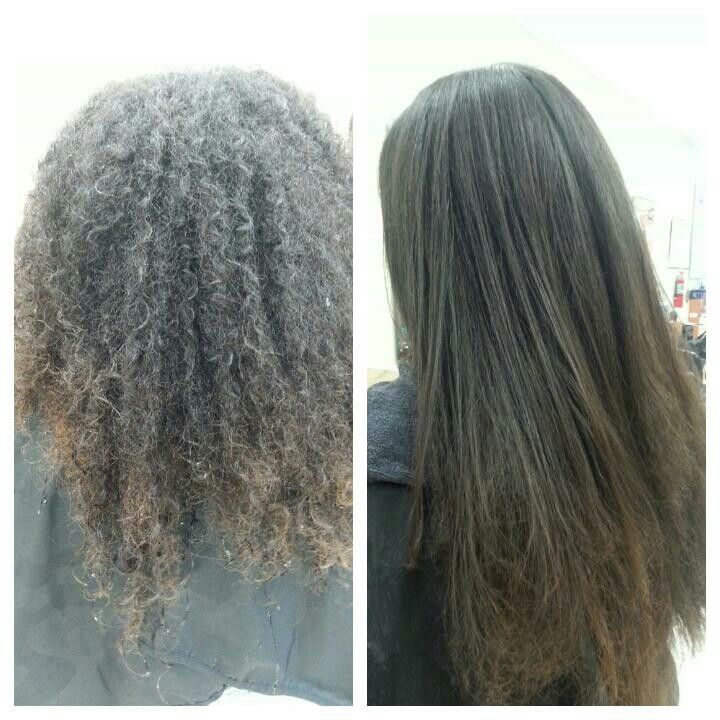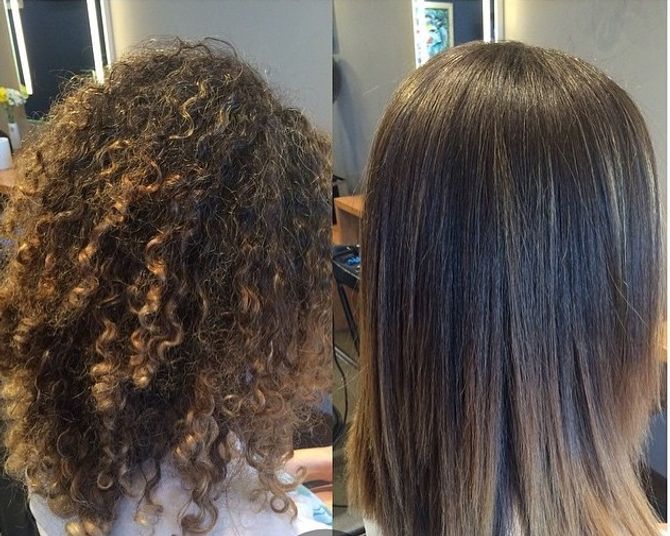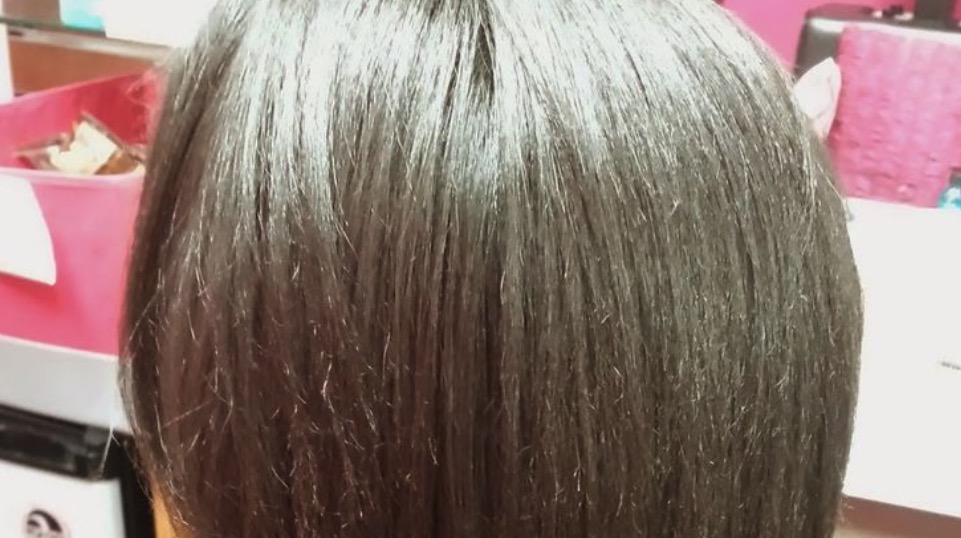Keratin treatment to loosen curls has become one of the most popular hair treatments globally. Women and men alike are seeking solutions to manage their curls and achieve smoother, sleeker hair. With the rise of this treatment, it's essential to understand what it entails, its benefits, and potential drawbacks. This guide will provide you with all the information you need to make an informed decision about keratin treatments.
Keratin treatments have revolutionized the haircare industry by offering a solution for those with unruly curls or frizzy hair. By smoothing out the hair cuticle, this treatment can significantly reduce frizz and add shine. However, it's important to weigh the pros and cons before committing to the process.
Whether you're considering keratin treatment for the first time or are already familiar with the concept, this comprehensive guide will explore everything from the science behind keratin treatments to tips for maintaining the results. Let's dive in!
Read also:Eva Nyc Mini Hair Dryer The Ultimate Travel Companion For Stylish Hair
Table of Contents
- What is Keratin Treatment?
- How Does Keratin Treatment Work?
- Benefits of Keratin Treatment
- Risks and Side Effects
- Preparing for Your Keratin Treatment
- Aftercare Tips for Maintaining Results
- Cost and Duration of Treatment
- Keratin Treatment vs Other Straightening Methods
- Who Should Avoid Keratin Treatment?
- Frequently Asked Questions
What is Keratin Treatment?
Keratin treatment is a chemical-based hair smoothing process that aims to reduce curls, frizz, and volume. The treatment involves applying a solution rich in keratin, a protein naturally found in hair, to the hair shaft. This solution is then sealed into the hair with heat using flat irons.
Keratin treatment to loosen curls is particularly popular among individuals with naturally curly or wavy hair who desire straighter, more manageable locks. It's not a permanent solution but can last several months, depending on the quality of the treatment and how well you maintain it.
How Keratin Works on Different Hair Types
Keratin treatments are versatile and can be adapted for various hair types, including fine, thick, or coarse hair. Here's how it works:
- For fine hair: Keratin adds body and shine without weighing it down.
- For thick hair: It reduces volume and enhances manageability.
- For coarse hair: It smooths the cuticle and reduces frizz significantly.
How Does Keratin Treatment Work?
Keratin treatment works by temporarily altering the structure of the hair. The process involves three main steps: application, heat sealing, and drying. During the application phase, a keratin-rich solution is evenly distributed throughout the hair. This solution penetrates the hair shaft, smoothing the cuticle.
Next, the solution is heat-sealed using a flat iron, which helps lock in the keratin and create a smooth, sleek finish. Finally, the hair is dried, and specific instructions are given to ensure the longevity of the treatment.
The Science Behind Keratin Treatments
Keratin is a structural protein that makes up the hair shaft. When applied as part of a treatment, it fills in the gaps in the hair cuticle, creating a smoother surface. The heat from the flat iron helps the keratin bond with the hair, resulting in reduced frizz and smoother hair.
Read also:Caramel Light Golden Brown Hair The Ultimate Guide To Achieving This Stunning Hair Color
Benefits of Keratin Treatment
There are numerous benefits to undergoing a keratin treatment, especially if you're looking to reduce curls and frizz. Below are some of the key advantages:
- Reduces frizz and enhances shine
- Makes hair easier to manage and style
- Provides smoother, silkier hair texture
- Reduces the need for daily heat styling
- Can last up to six months with proper care
While keratin treatment to loosen curls is not permanent, the results can last for several months, making it a worthwhile investment for many.
Risks and Side Effects
Although keratin treatments offer many benefits, they also come with potential risks and side effects. It's crucial to be aware of these before proceeding with the treatment:
- Some keratin treatments contain formaldehyde, which can be harmful if inhaled in large quantities.
- Overuse or improper application can lead to hair damage or breakage.
- Not all individuals are suitable candidates for keratin treatments, especially those with sensitive scalps.
Consulting with a professional stylist is essential to ensure the treatment is safe and appropriate for your hair type.
How to Minimize Risks
Choosing a reputable salon and experienced stylist can significantly reduce the risks associated with keratin treatments. Additionally, selecting formaldehyde-free treatments can help minimize potential health hazards.
Preparing for Your Keratin Treatment
Proper preparation is key to achieving optimal results from your keratin treatment. Here are some steps you can take to prepare:
- Avoid washing your hair for at least 24-48 hours before the treatment.
- Do not use any styling products, such as gels or mousses, in the days leading up to the appointment.
- Communicate openly with your stylist about your hair goals and any concerns you may have.
By following these preparation tips, you can help ensure the best possible outcome from your keratin treatment.
Aftercare Tips for Maintaining Results
Aftercare is crucial to maintaining the results of your keratin treatment. Here are some tips to keep your hair smooth and healthy:
- Avoid washing your hair for at least 72 hours after the treatment.
- Use sulfate-free shampoos and conditioners specifically designed for keratin-treated hair.
- Avoid using heat styling tools as much as possible to preserve the treatment.
By following these aftercare tips, you can extend the life of your keratin treatment and enjoy smoother, healthier hair for longer.
Cost and Duration of Treatment
The cost of keratin treatment to loosen curls can vary depending on factors such as location, salon reputation, and the length and thickness of your hair. On average, prices range from $300 to $800. The duration of the treatment typically lasts between 1.5 to 3 hours.
It's important to budget for the treatment and consider the ongoing costs of aftercare products, such as specialized shampoos and conditioners.
Keratin Treatment vs Other Straightening Methods
There are several hair straightening methods available, each with its own advantages and disadvantages. Here's how keratin treatment compares to other popular methods:
- Brazilian Blowout: Similar to keratin treatment, but often contains formaldehyde and lasts around 12 weeks.
- Japanese Straightening: A more permanent option that involves breaking and reforming the hair's bonds, but it can be more damaging.
- Thermal Reconditioning: A permanent straightening method that involves heat and chemicals, but it can be harsh on the hair.
Keratin treatment stands out as a less damaging option with long-lasting results, making it a popular choice for many.
Who Should Avoid Keratin Treatment?
While keratin treatment is suitable for most people, there are certain individuals who should avoid it:
- Those with sensitive scalps or allergies to chemicals.
- People who are pregnant or breastfeeding, due to potential exposure to formaldehyde.
- Individuals with severely damaged or chemically treated hair.
Always consult with a professional stylist to determine if keratin treatment is right for you.
Frequently Asked Questions
How Long Does Keratin Treatment Last?
Keratin treatments typically last between 3 to 6 months, depending on factors such as hair type and aftercare.
Can Keratin Treatment Damage Your Hair?
When performed by a professional and maintained properly, keratin treatments are generally safe. However, overuse or improper application can lead to hair damage.
Is Keratin Treatment Safe During Pregnancy?
It's generally recommended to avoid keratin treatments during pregnancy due to potential exposure to formaldehyde and other chemicals.
Can I Dye My Hair After Keratin Treatment?
It's best to wait at least two weeks after a keratin treatment before dyeing your hair to ensure the treatment results are not compromised.
Are There Natural Alternatives to Keratin Treatment?
Yes, there are natural alternatives such as using argan oil, coconut oil, or other hair smoothing products that can help reduce frizz and add shine without the use of chemicals.
Kesimpulan
In conclusion, keratin treatment to loosen curls offers a viable solution for those seeking smoother, more manageable hair. While it comes with potential risks, choosing a reputable salon and following proper aftercare can help minimize these risks and maximize the benefits. Remember to weigh the pros and cons and consult with a professional before proceeding with the treatment.
We encourage you to share your thoughts and experiences with keratin treatments in the comments below. Additionally, feel free to explore our other articles for more haircare tips and advice. Thank you for reading, and we hope this guide has been helpful in your haircare journey!


